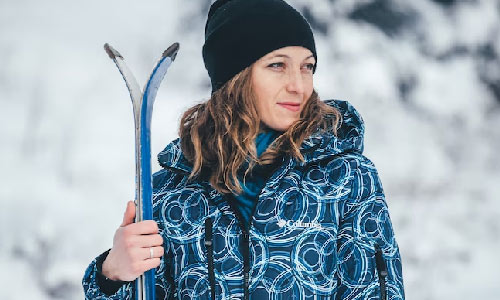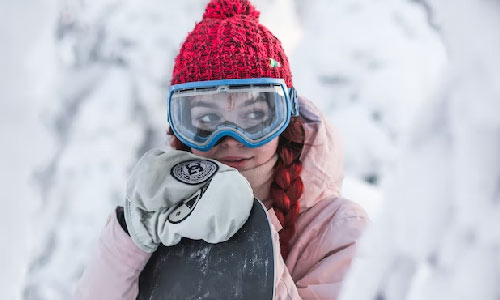Things to Wear While Skiing and Snowboarding
Author

Author, writer, artist, photographer, analyst, dreamer, geek, gamer. As a freelance writer and blogger for Outdoor Look, Pete writes about the outdoors and why you should be in it. In the time that is left over from camping, running, hiking, cycling, writing novels and being a full time analyst, Pete sometimes mows the lawn, when he's ordered by Mrs Gillham!
Winter activities are fun and thrilling and if you want to have a memorable first experience, make sure you have the essential gear to keep you warm, dry, and safe from extreme weather conditions.
Things to look out for when choosing your clothes:
Fabric
The fabric should be wind- and water-proof, odour-controlling, quick-drying, moisture-wicking, temperature controlling, and breathable. The fabric of your clothes should be made of merino wool, synthetic fabrics like polyester, nylon, or blends, goose down, and polyester fleece.
Fit
It is important that your clothing fits you well so that you can have a hassle-free experience. Here are some tips for your fit:
- The outer layers should be of loose fit so that there is only a negligible restriction in movement.
- Mid-layers should fit you well without being too tight.
- Base layers should properly fit your body. The tops should be long enough to tuck into your pants

Technologies
Your clothes and gear should have either Gore-Tex or Polygiene technology. Gore-Tex is a semi-permeable fabric that is waterproof and breathable, whereas, Polygiene controls odour.
Here is a list of things to get for your skiing or snowboarding trip:
Beanie or Buff
Wear a warm, moisture-wicking, and quick-drying beanie or buff made from merino, polyester fleece, or synthetic to protect your head. It should be thin enough to fit under a helmet.
Underpants
Wearing underpants that have moisture-wicking, quick-drying, flat seams, and odour-resistant features is necessary. I usually wear the Runderwear Women’s Briefs but you can check out other options as well.
Sports Bra
Just like the underpants, a sports bra with quick-dry, moisture-wicking, flat seam, and odour-resistant properties is a must-have. The preferred fabric for the sports bra is merino, synthetic, or Polygiene treated synthetically. I wear the Runderwear Low-Impact Crop Top but you can try other brands as well.
Base Layer Top
A top with moisture-wicking, quick-drying, and odour-resistant properties should be worn before you head out. The material can either be merino or synthetic or Polygiene treated synthetically. I wear the Armadillo Merino Artemis Women’s Long Sleeve Crew Neck before my trips.
Mid Layer
Your mid-layer should be waterproof, breathable, durable, insulating, and most importantly, lightweight. Leather, synthetic, or a mixture of both fabrics work well for this layer of clothing.

Ski Jacket
Make sure the jacket is waterproof, durable, breathable, and slightly insulated to keep the warmth intact. The jacket’s material can be synthetic. Some jackets come with an internal snow skirt that prevents snow from getting inside the jacket if you ever fall. Many jackets also have a ski pass holder and pit vents.
Ski Pants
Wear a synthetic pant that is lightly insulated, waterproof, windproof, durable, and breathable. Some pants come with zippered vents that help in temperature regulation.
Ski Socks
Make sure you wear a pair of warm, odour resistant, and moisture-wicking socks that are made of either merino/synthetic blend or Polygiene treated synthetically.
Ski Gloves
The gloves should be warm, breathable, wind- and water-proof, and durable. They can be made from leather or synthetic. Having a nose wipe pre-installed in the glove is a blessing in disguise.
Goggles
Choose a pair of glasses that have mirrored lenses as they help in sunny conditions. For low light days, wear an orange/brown lens. To adjust to the changing weather conditions, having a swift pair of interchangeable goggles is the best option.
Helmet
The helmet should give warmth and protection to your head. It should be padded to give your head comfort at the same time. Some of them come with removable ear pads while some have a peak on the front and a goggle clip on the back.
Author

Author, writer, artist, photographer, analyst, dreamer, geek, gamer. As a freelance writer and blogger for Outdoor Look, Pete writes about the outdoors and why you should be in it. In the time that is left over from camping, running, hiking, cycling, writing novels and being a full time analyst, Pete sometimes mows the lawn, when he's ordered by Mrs Gillham!
Categories
- Sport (28)
- Product Reviews (3)
- Team Outdoor Look (7)
- Mike Wild (2)
- Mike Payton (2)
- Suse Hammond-Pears (3)
- Snowboarding (12)
- Latest Offers (105)
- Shop Talk (1)
- Competitions (7)
- Walking (413)
- Lifestyle Fashion (8)
- Travel (86)
- Kit Guides (176)
- Workwear Clothing (6)
- Safety Workwear (4)
- Health/Fitness (289)
- Skiing (91)
- Great Outdoors (1316)
- Cycling (92)
- January 2025
- December 2024
- November 2024
- October 2024
- September 2024
- August 2024
- July 2024
- June 2024
- May 2024
- April 2024
- March 2024
- February 2024
- January 2024
- December 2023
- November 2023
- October 2023
- September 2023
- August 2023
- July 2023
- June 2023
- May 2023
- April 2023
- March 2023
- February 2023
- January 2023
- December 2022
- November 2022
- October 2022
- September 2022
- August 2022
- July 2022
- June 2022
- May 2022
- April 2022
- March 2022
- February 2022
- January 2022
- December 2021
- November 2021
- October 2021
- September 2021
- August 2021
- July 2021
- June 2021
- May 2021
- April 2021
- March 2021
- February 2021
- January 2021
- December 2020
- November 2020
- October 2020
- September 2020
- August 2020
- July 2020
- June 2020
- May 2020
- April 2020
- March 2020
- February 2020
- January 2020
- December 2019
- November 2019
- October 2019
- September 2019
- August 2019
- July 2019
- June 2019
- May 2019
- April 2019
- March 2019
- February 2019
- January 2019
- December 2018
- November 2018
- October 2018
- September 2018
- August 2018
- July 2018
- June 2018
- May 2018
- April 2018
- March 2018
- February 2018
- January 2018
- December 2017
- November 2017
- October 2017
- September 2017
- August 2017
- July 2017
- June 2017
- May 2017
- April 2017
- March 2017
- February 2017
- January 2017
- December 2016
- November 2016
- October 2016
- September 2016
- August 2016
- July 2016
- June 2016
- May 2016
- April 2016
- March 2016
- February 2016
- January 2016
- December 2015
- November 2015
- October 2015
- September 2015
- August 2015
- July 2015
- June 2015
- May 2015
- April 2015
- March 2015
- February 2015
- January 2015
- December 2014
- November 2014
- October 2014
- September 2014
- August 2014
- July 2014
- June 2014
- May 2014
- April 2014
- March 2014
- February 2014
- January 2014
- December 2013
- November 2013
- October 2013
- September 2013
- August 2013
- July 2013
- June 2013
- May 2013
- April 2013
- March 2013
- February 2013
- January 2013
- December 2012
- November 2012
- October 2012
- September 2012
- August 2012
- July 2012
- June 2012
- May 2012
- April 2012
- March 2012
- February 2012
- January 2012
- December 2011
- November 2011
- October 2011
- September 2011
- August 2011
- May 2010
- April 2010
- March 2010
- February 2010
- January 2010
- November 2009
- October 2009
- September 2009


Submit a Comment